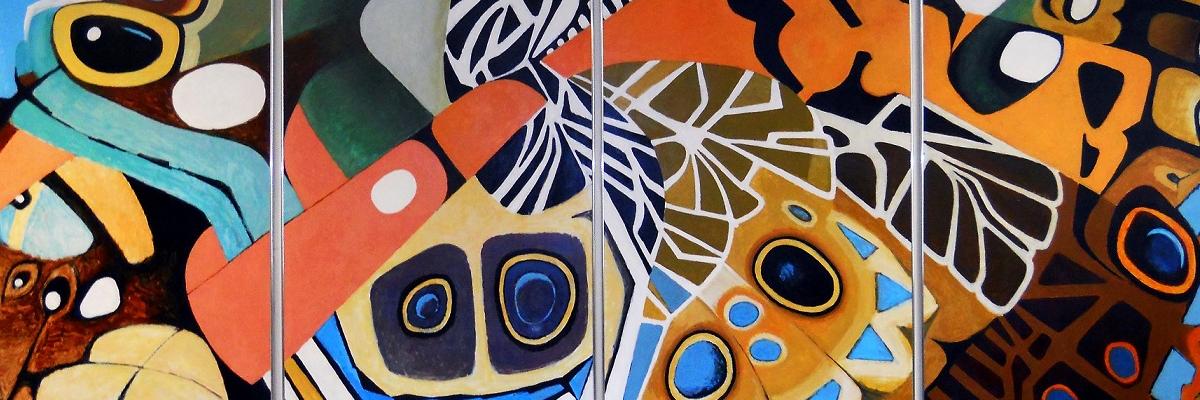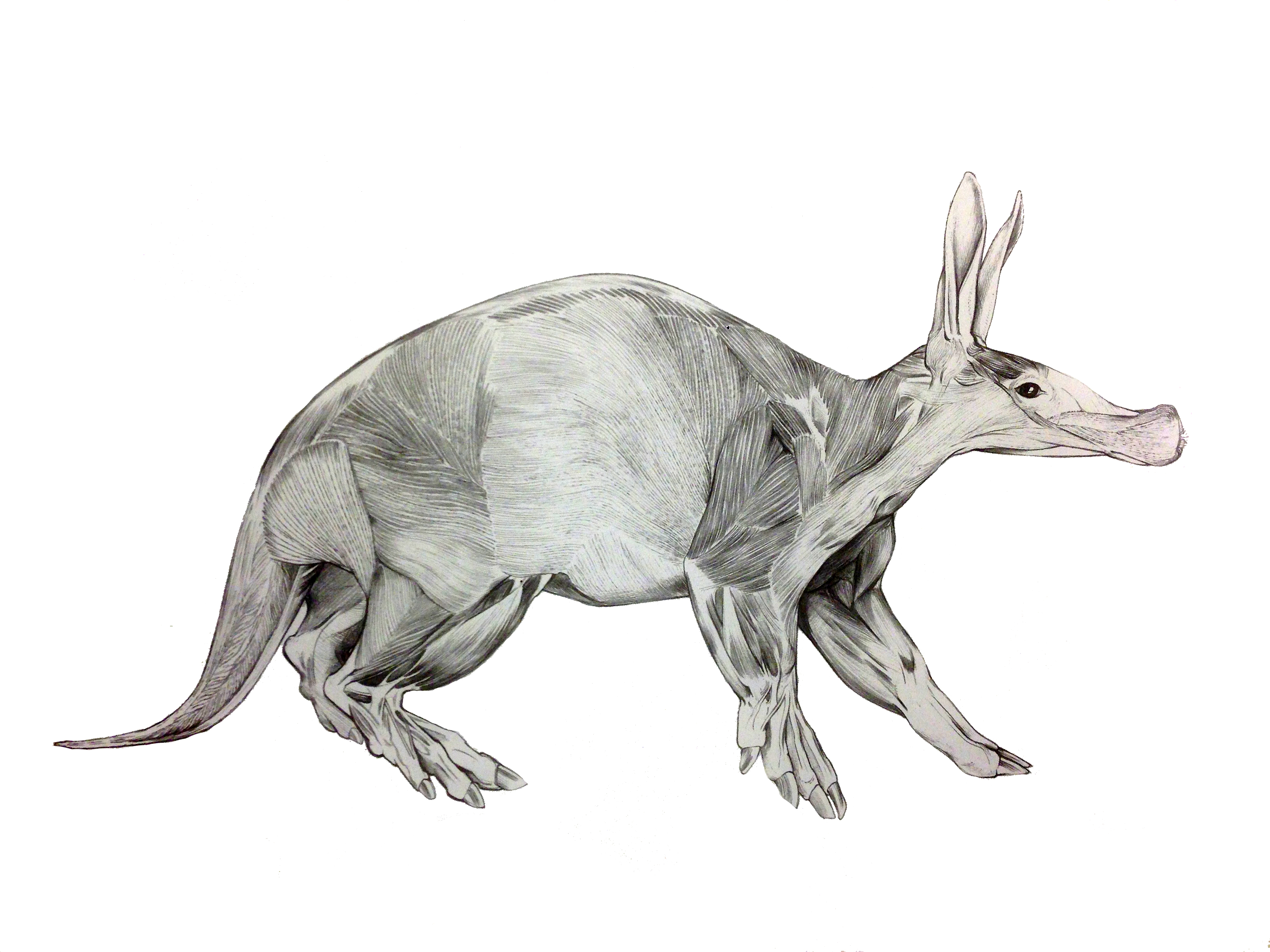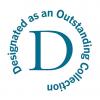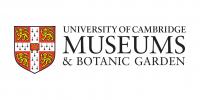
Submitted by Tricia Harnett on Tue, 07/05/2019 - 13:08
An exhibition of artworks by one of the world’s leading naturalists – Jonathan Kingdon – now open at the University Museum of Zoology, Cambridge, until 15 September 2019.
Kingdon was born in Tanzania in 1935 and lived and worked in East Africa for many years. As well as being one of the world’s greatest naturalists, Kingdon has developed a wealth of artistic practices which seek to explore and explain some of the hows and whys of animal evolution. Through his artworks, he proposes answers to questions such as why the zebra is so strikingly striped, how certain groups of birds evolved to show such a diversity of forms, and why vultures’ heads resemble rotting flesh.
This exhibition of sculpture, paintings, ceramics and drawings offers a biologist’s effort to understand key evolutionary questions: Why do animals live where they live? How have different species evolved to appear the way that they do? Why have different patterns evolved in nature?
Scientists continuously ask how species come to be unique, but few go beyond using words to explain their theories. In exploring meaning behind the visible appearance of bones, muscles, feathers and fur, Jonathan Kingdon uses an artist’s media to communicate his science. He is at once a scientist and an artist – there is no distinction.
The exhibition starts with a series of Kingdon’s anatomical drawings. The casualties that provided him with cadavers to dissect and draw have been, directly or indirectly, victims of the crisis that the richest mammal fauna in the world faces in Africa. Constrained by the rapid expansion of lands occupied by livestock and people, many species are in freefall and face uncertain futures.
Kingdon was a witness to all this. He collected carcasses – essentially as by-products of the crisis – and set out to document what the world stood and stands to lose through drawing and description. Growing up when and where he did provided Kingdon with a unique opportunity to access these rare specimens. He conducted some 400 dissections, and around 30 of the drawings he produced are displayed in the cases amongst the Museum’s skeletons and taxidermy of the species that inspired them.
The major part of the exhibition showcases Kingdon’s work to communicate how animals’ external appearances have evolved, though stunning artistic practices, rich in colour.
“There is a basic logic in an animal’s anatomy beneath the skin, and this is also true for the animal’s external appearance”, says Kingdon. “Animals’ patterns can be scientifically analysed, and I am interested in exploring this, using techniques more typically employed by artists rather than through words and graphs.”
This exhibition showcases a lifetime of observations in nature. The works are accompanied by Kingdon’s personal reflections on decades of experience with these animals in his own words – from the aardvarks and primates he would encounter in his childhood gardens, to the wild creatures he experienced on the dissection table. Kingdon describes one experience: “This big male lion was given to me as a very fresh corpse after dying of disease. It was dumped on my lawn, and I had to lift him up. As I threw him over my shoulders, all the air in his lungs came through his throat, and there was a tremendous roar in my ear. I dropped it and leapt back in shock, but of course he was stone dead.”
Jack Ashby, the Museum’s Manager and one of the exhibition’s curators said, “The University Museum of Zoology, Cambridge, is such a visual space. It’s the perfect place to have worked with Jonathan Kingdon to create this exhibition. The division between art and science which education seems built around today is artificial. Both are deeply creative, and both are thoroughly analytical. This exhibition is the perfect demonstration of this: Kingdon’s science has never been separate from his art.”
The exhibition was supported by The National Lottery Heritage Fund and created in partnership with the Cambridge Conservation Initiative (CCI).
The CCI’s John Fanshawe, who also curated the exhibition, said “Artists play a crucial role in exploring, understanding, and communicating the conservation of nature. CCI’s cross-cutting arts, science and conservation programme works with a growing range of artists, through exhibitions, events, and residencies, to celebrate our cultural connections and interdependencies on biodiversity. Throughout his life, Jonathan Kingdon has worked closely with many of the institutions, and individuals in CCI. His work as an artist and writer, and his numerous books, have played an inspirational role in supporting and inspiring the conservation community worldwide.”
Sir David Attenborough who opened the exhibition at a private event says “Jonathan Kingdon’s meticulous observation of wildlife over the course of his lifetime has answered many profound questions about how animals work. He has also explained his findings with dramatic and pioneering artworks that have few if any parallels. The Museum of Zoology, which contains many displays that illuminate the questions he tackles, is the perfect place to exhibit his work.”
Notes:
1. The exhibition “Evolution as inspiration” is open from Friday 17th May to Sunday 15th September 2019.
2. The Museum is open to the public every Tues to Sat: 10am to 4.30pm. Sun and Bank Holidays: 12noon to 4.30pm (closed other Mondays).
3. The Cambridge Conservation Initiative’s website: http://www.cambridgeconservation.org/
4. Artwork photography: O.Negra, MUSE-Science Museum







